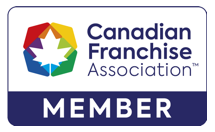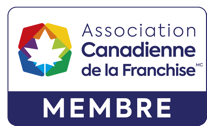It has been nearly a year and a half since the new Canada Not-for-profit Corporations Act (the “New Act”) came into force on October 17, 2011. A significant number of federally incorporated not-for-profit corporations have not yet transitioned to the New Act.
Below is a summary of the New Act and the steps to transition.BackgroundThe New Act replaces the Canada Corporations Act (the “Old Act”). The Old Act had not been significantly amended since 1917 and did not reflect modern standards regarding corporate operations and corporate governance.The New Act benefits not-for-profit corporations by providing a clear set of procedural rules and more flexibility on making fundamental changes (i.e. Corporations Canada will no longer review and approve corporate by-laws).The New Act also sets out an objective standard for directors in carrying out their duties and responsibilities and confirms the availability of a due diligence defence. This will reassure individuals who become directors of the Corporation.Legal Consequences of the New ActIf your corporation was incorporated under Part II of the Old Act and if you wish to maintain the status of your corporation, you must comply with the New Act’s transition requirements.TransitionThe New Act does not automatically apply to existing not-for-profit corporations. To have the New Act apply, a corporation must apply to be continued under the New Act.The Old Act will apply to a corporation until a Certificate of Continuance is issued by Corporations Canada under the New Act.Corporations that do not make the transition by the October 17, 2014 deadline will be dissolved. It is very important to note that dissolution will affect the status of a registered charity and may result in a revocation tax equal to the full value of the corporation’s remaining assets.ProcedureThe steps to transition include:1. Review of Current Letters Patent and By-Laws;The corporation’s letters patent and by-laws must be reviewed for any inconsistencies with the New Act. The New Act includes default rules that will apply unless contrary rules are specified. As a result, the New Act does not require the same level of detail in a corporation’s articles or by-laws as the Old Act. A corporation can override many of these default rules; however, there are some rules that are mandatory.2. Prepare Articles of Continuance or Revise Letters Patent;Once the corporation determines which rules it wishes to retain, articles of continuance must be prepared. The articles of continuance set out the statement of the corporation’s purpose. If the corporation is a registered charity, the statement of purpose must be identical to the objects set out in the corporation’s current Letters Patent or Supplementary Letters Patent. Any change to the objects must be approved by the Canada Revenue Agency, Charities Directorate.3. Revise By-laws;Ensure that the corporation’s by-laws comply with the New Act. This is a good opportunity to amend your general by-laws if you have not done so recently.4. Obtain Members’ Approval;The articles of continuance and by-laws will require members’ approval. The New Act requires that the articles of continuance be approved by two-thirds of the members of the corporation; and5. File the Required Documents with Corporations Canada.Finally, the corporation must file the application for continuance with Corporations Canada so as to be eligible to receive a Certificate of Continuance before October 17, 2014.Next StepsWe have met with numerous Boards to review these requirements in greater detail and to explain the new rights and obligations of directors, officers and members. We have also assisted a number of corporations with the transition. We recommend that you commence the process of transition at least four months before your next Annual General Meeting.

 2 St Clair Ave West
2 St Clair Ave West


